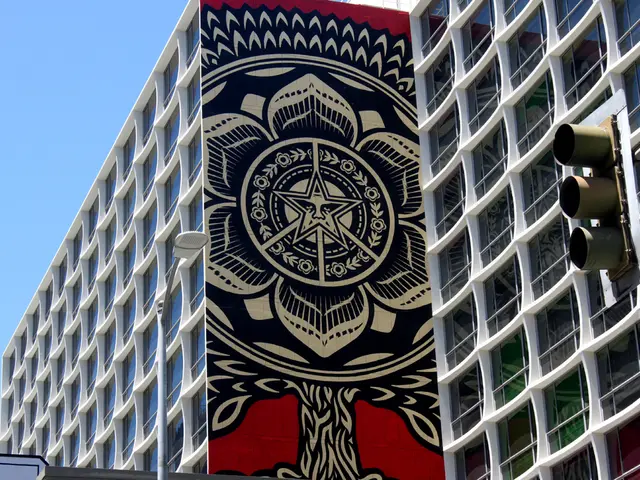Capital Market Innovation: The Wave-making Impact of Blue Bonds
In the quest for sustainable solutions within the marine industry, blue bonds are emerging as a promising funding mechanism. These innovative financial instruments are designed to facilitate the financing of projects that promote the health and conservation of ocean and water ecosystems.
Blue bonds can be issued in two structures: a regular use-of-proceeds format or a debt-for-nature swap structure. The latter, while more complex and expensive to implement compared to the former, has been successfully utilised by several countries, including Seychelles, Indonesia, Colombia, Gabon, Belize, and Barbados, with The Nature Conservancy playing a facilitating role.
The United Nations (UN) guidelines for issuing a blue bond involve several structured steps. The process begins with capacity building, enhancing the capabilities of finance ministries, central banks, and regulators to understand, develop, and issue blue bonds. This includes training and frameworks to ensure strong governance and regulatory oversight.
Issuers are then required to align their blue bond frameworks with established sustainability and financial standards, such as the Green Bond Principles (GBP) 2021, Green Loan Principles (GLP) 2023, and the IFC Guidelines for Blue Finance. An issuer prepares a Blue Bond Framework document outlining eligible project categories, management of proceeds, and reporting commitments.
A second-party opinion or independent verification is typically sought to review the framework’s robustness, transparency, and alignment with sustainability standards, providing credibility to investors on the environmental impact and governance of the bond. The bond is then issued in capital markets, leveraging the established framework and independent opinion to attract investors keen on sustainable ocean and water initiatives.
Continuous monitoring and annual reporting on the use of proceeds and environmental impact are essential to maintain transparency and investor confidence. While specific UN procedural steps are mainly focused on building institutional capacities and promoting adherence to overarching sustainability standards, these steps align with the broader blue bond issuance practice supported by the UN and international financial bodies.
As climate change becomes a pressing global matter, there is growing demand for sustainable solutions, and blue bonds are increasingly seen as a way for issuers and investors to contribute to solving this issue. The blue economy is expected to double in size to U.S.$3 trillion by 2030, creating 40 million jobs, making it the eighth largest economy in the world, with an asset value estimated at US$24 trillion.
However, it's worth noting that many issued blue bonds so far do not have fully formalized or detailed frameworks per the IFC Guidelines for Blue Finance, indicating a continuing evolution of best practices in this domain.
In conclusion, the UN encourages a stepwise approach centered on capacity building, adherence to internationally recognized principles, framework transparency, independent validation, and robust reporting for issuing blue bonds. This approach supports the sustainable financing of ocean-related projects in line with global environmental goals.
On the other hand, debt-for-nature swaps are financial instruments through which a developing country's external debt is forgiven or reduced in exchange for local environmental conservation measures. While not as common as blue bonds, they offer an alternative approach to financing sustainable marine projects.
References:
- United Nations Development Programme (UNDP). (2021). Blue Bonds: A Financial Tool for Ocean Conservation. [Online] Available at: https://www.undp.org/content/undp/en/home/sustainable-development/oceans-and-coasts/blue-bonds.html
- International Finance Corporation (IFC). (2020). Blue Bonds: A New Financing Tool for Ocean and Water Projects. [Online] Available at: https://www.ifc.org/wps/wcm/connect/topics_ext_content/ifc_external_corporate_site/ifc_publications/blue_bonds_a_new_financing_tool_for_ocean_and_water_projects
- Climate Bonds Initiative. (2022). Blue Bonds. [Online] Available at: https://www.climatebonds.net/project/blue-bonds
- The Nature Conservancy. (2021). Blue Bonds: A New Financing Tool for Ocean Conservation. [Online] Available at: https://www.nature.org/en-us/about-us/who-we-are/where-we-work/united-states/our-work/oceans/blue-bonds/
- World Wildlife Fund (WWF). (2021). Blue Bonds: A New Financing Mechanism for Ocean Conservation. [Online] Available at: https://www.worldwildlife.org/magazine/issues/spring-2021/articles/blue-bonds-a-new-financing-mechanism-for-ocean-conservation
- The United Nations guidelines for issuing blue bonds highlight the importance of environmental science, particularly in ocean and water ecosystems, as these bonds focus on projects that promote their health and conservation.
- As the demand for sustainable solutions increases, especially in relation to climate change, many businesses and investors are turning to environmental-science-focused financial instruments like blue bonds for investing opportunities.
- In order to ensure credibility and transparency, a second-party opinion or independent verification is typically sought for blue bond frameworks, aligning the financial aspect of these instruments with established sustainability standards in business and finance.







